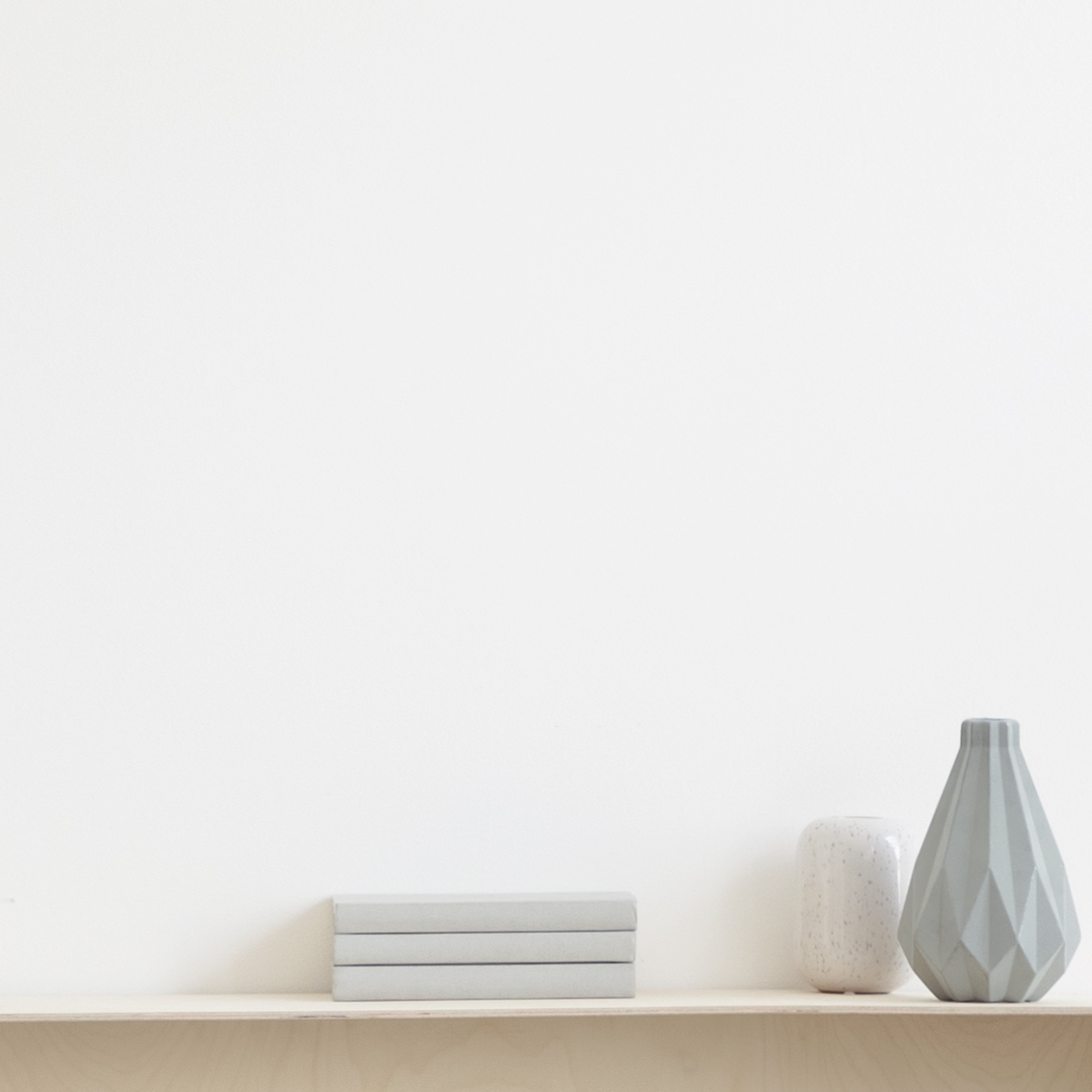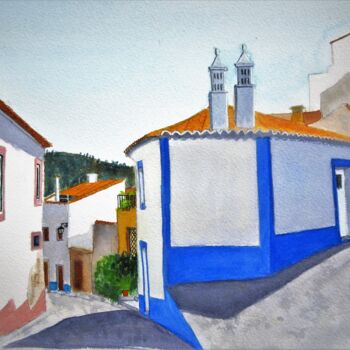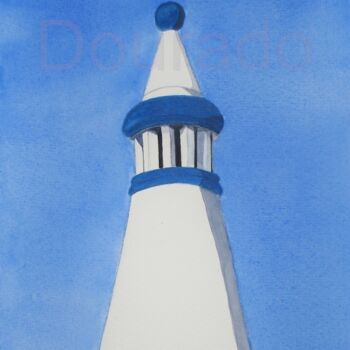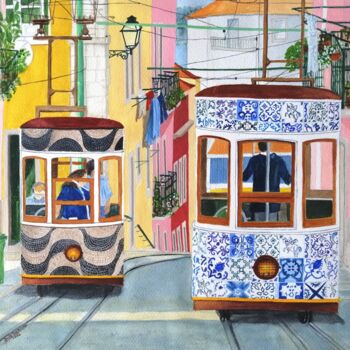


Faites-nous savoir si vous souhaitez voir plus de photos de cette œuvre !
- Arrière de l'oeuvre / Côté de l'oeuvre
- Détails / Signature / Surface ou texture de l'œuvre
- Oeuvre en situation, Autre...
Olhando o Mar (Forte de Sta.Catarina,Portimão,Portugal) (2020) Peinture par Inês Dourado
Plus d'info
- Emballage (Enveloppe) Toutes les œuvres sont expédiées soigneusement protégées et assurées, avec un transporteur premium.
- Suivi Suivi de commande jusqu'à la livraison à l'acheteur. Un numéro de suivi vous sera fourni afin que vous puissiez suivre le colis en temps réel.
- Délais Livraison dans le monde entier en 3 à 7 jours (Estimation)
- Douanes non incluses Le prix ne comprend pas les frais de douane. La plupart des pays n'ont pas de taxe à l'importation pour les œuvres d'art originales, mais vous devrez peut-être payer la TVA réduite. Les frais de douane (le cas échéant) sont à calculer à l'arrivée par le bureau de douane et seront facturés séparément par le transporteur.
Plus d'info
- Certificat d'authenticité en ligne traçable Les certificats d'authenticité peuvent être vérifiés en ligne à tout moment en scannant le code de l'oeuvre.
- Certification de la cote artiste Les experts étudient l'œuvre et la carrière d'un artiste puis établissent une cotation moyenne indépendante et fiable. La cotation moyenne permet de situer l'artiste sur une gamme de prix pour une période donnée. Les experts peuvent également être sollicités pour établir une estimation plus précise pour une œuvre en particulier.
Plus d'info
Paiement 100% sécurisé avec un certificat SSL + 3D Secure.
Plus d'info
-
Œuvre d'art originale (One Of A Kind)
Peinture,
Aquarelle
sur Papier
- Dimensions Hauteur 11,4in, Largeur 15,4in
- État de l'œuvre L'oeuvre est en parfait état
- Encadrement Cette oeuvre n'est pas encadrée
- Catégories Peintures à moins de 1 000 $US Figuratif Paysage
Looking at the sea, Portimão, Algarve, South of Portugal
Watercolor on Fabriano paper 300g)
Alguma informação - Some information
Nesta pintura represento parte do interior do Forte de Santa Catarina, na Praia da Rocha, Portimão (Algarve, sul de Portugal).
São muito discutidas as origens do forte de Santa Catarina. Alguns autores apontam uma origem quinhentista, durante o reinado de D. Sebastião, mas nenhuma prova foi, até ao momento, identificada.
Em 1621, em pleno domínio espanhol, Alexandre Massai, à frente de uma comitiva de uma dezena de especialistas, percorreu a foz do rio Arade. Pretendia-se encontrar o melhor local para edificar uma fortaleza que pudesse defender a barra do mais importante rio do Sul do território, uma vez que os velhos castelos medievais (de Ferragudo e de Portimão) se encontravam já desajustados em relação às exigências de uma defesa activa contra piratas, corsários e invasões marítimas. Esse local haveria de ser a ponta da Praia da Rocha (ou Ponta de Santa Catarina, dado que aí existia uma ermida posteriormente integrada na fortaleza, e que ainda hoje existe, apesar de substancialmente transformada), no extremo Sul do território de Portimão, e sobre uma falésia disposta em cunha sobre o mar. Vários argumentos foram invocados para esta localização, em detrimento de uma fortaleza mais interior, situada preferencialmente em Ferragudo: as melhores condições do relevo; a maior facilidade de abastecimento de água e, especialmente, a privilegiada ligação a Portimão, determinaram esta escolha (COUTINHO, 1997, p.124).
Nesse ano de 1621, Massai desenhou três propostas para a fortificação, todas concordando com a existência de uma ampla fachada, a Norte, que ficaria a servir de fachada principal ao edifício (COUTINHO coord., 2001, p.134, onde se publicam as respectivas propostas). A obra, propriamente dita, iniciou-se, apenas, oito anos mais tarde, em 1629, e estava terminada em 1633, o que indica uma edificação relativamente rápida. Infelizmente, as muitas alterações por que o edifício passou, nos séculos seguintes, fez com que toda a configuração original do interior fosse suprimida. Do projecto do século XVII, resta apenas a fachada principal, organizada em três panos simétricos, sendo o central - onde se abre a porta principal - ligeiramente recuado. Esta, de perfil recto, possui grossas pilastras e lintel compostos por pedras almofadadas, que conferem uma certa monumentalidade à entrada e que contrasta com a dominante horizontal, e relativamente baixa, de toda a fachada. Ainda desse projecto filipino fazia parte um fosso, que antecedia a entrada e uma ponte levadiça, elementos de que hoje nenhum vestígio resta.
O terramoto de 1755 danificou a fortaleza. As obras de reconstrução desenvolveram-se em duas fases fundamentais: nos anos imediatos, deram-se as reparações imprescindíveis; na década de 90, as restantes (VENTURA e MAIA, 1993, p.41). Contudo, a profunda remodelação deste espaço aconteceu já no século XX, no âmbito do desenvolvimento turístico do Barlavento. O interior foi repartido entre um posto da Guarda Fiscal e da Capitania do Porto de Portimão (que patrocinaram a construção de novos edifícios) e um miradouro. Este último, data da década de 60 e foi ocupar a zona onde originalmente se encontravam as baterias de combate, viradas ao mar e no extremo Sudeste do conjunto. Nestas obras, parte do penedo sobre o qual se encontra a fortaleza foi reforçado com construção moderna, o que permitiu uma ampliação da área de miradouro. Paralelamente, o progressivo assoreamento da barra e o consequente aumento do areal, permitiu o aproveitamento de toda a estrutura como ponto de apoio à praia da Rocha, razão da existência de um restaurante e esplanada recentes.
Uma das últimas construções militares filipinas em território algarvio, erguida com a preocupação de defender as costas da Península, por diversas vezes assoladas por armadas de corsários e de exércitos inimigos, a fortaleza de Santa Catarina é um dos fortes que melhor ilustra a acção de Alexandre Massai, engenheiro militar que viajou pelo Algarve, entre 1617 e 1621, e de cujo périplo resultou uma Descrição do Reino do Algarve e numerosos projectos de fortificações costeiras.
(Cf. www(dot)patrimoniocultural(dot)gov(dot)pt
In this painting I represent part of the interior of the Fort of Santa Catarina, at Praia da Rocha, Portimão (Algarve, south of Portugal).
In 1621, in full Spanish domination, Alexandre Massai, at the head of a group of a dozen specialists, crossed the mouth of the Arade River. It was intended to find the best place to build a fortress that could defend the bar of the most important river in the south of the territory, since the old medieval castles (Ferragudo and Portimão) were already out of step with the demands of a defense active against pirates, privateers and maritime invasions. This place would be the tip of Praia da Rocha (or Ponta de Santa Catarina, since there was a chapel later integrated into the fortress, and which still exists today, despite being substantially transformed), in the extreme south of the territory of Portimão, and on a cliff wedge over the sea. Several arguments were invoked for this location, to the detriment of a more inland fortress, preferably located in Ferragudo: the best relief conditions; the greater ease of water supply and, especially, the privileged connection to Portimão, determined this choice (COUTINHO, 1997, p.124).
In that year of 1621, Massai designed three proposals for the fortification, all agreeing with the existence of a wide facade, to the North, which would serve as the main facade of the building (COUTINHO coord., 2001, p.134, where the respective proposals). The work itself started only eight years later, in 1629, and was completed in 1633, which indicates a relatively fast construction. Unfortunately, the many changes that the building underwent in the following centuries caused the entire original configuration of the interior to be suppressed. From the 17th century project, only the main façade remains, organized in three symmetrical panels, the central one - where the main door opens - slightly recessed. This one, with a straight profile, has thick pilasters and lintels composed of cushioned stones, which give a certain monumentality to the entrance and which contrasts with the horizontal dominance, and relatively low, of the entire facade. Also part of that Philippine project was a moat, which preceded the entrance and a drawbridge, elements of which today no trace remains.
The 1755 earthquake damaged the fortress. The reconstruction works were carried out in two fundamental phases: in the immediate years, the necessary repairs took place; in the 90s, the rest (VENTURA and MAIA, 1993, p.41). However, the profound remodeling of this space took place in the 20th century, in the context of the Barlavento tourist development. The interior was divided between a post of the Fiscal Guard and the Port Authority of Portimão (which sponsored the construction of new buildings) and a viewpoint. The latter, dating from the 60s and went to occupy the area where the combat batteries were originally, facing the sea and in the extreme south-east of the complex. In these works, part of the boulder on which the fortress is located was reinforced with modern construction, which allowed an extension of the viewpoint area. At the same time, the progressive silting up of the bar and the consequent increase in sand, allowed the use of the entire structure as a support point for Praia da Rocha, which is the reason for the existence of a recent restaurant and terrace.
One of the last Philippine military constructions in the Algarve, built with the concern of defending the coasts of the Peninsula, which were often devastated by corsaires and enemy armies, the fortress of Santa Catarina is one of the forts that best illustrates Alexandre's action. Massai, military engineer who traveled through the Algarve, between 1617 and 1621, and whose journey resulted in a Description of the Kingdom of the Algarve and numerous coastal fortification projects.
Thèmes connexes
Inês Dourado est une peintre portugaise contemporaine primée. Dans les peintures de Dourado, on peut trouver l'essence poétique des paysages urbains animés et des journées pleines d'ombre et de lumière. Utilisant un large éventail de médiums, tels que l'acrylique, l'huile, l'aquarelle, le stylo gel et la détrempe, elle crée habilement des paysages urbains figuratifs sur papier et sur toile.
Inês Dourado est née en 1958, au Portugal. Elle est titulaire d'une licence en histoire de l'art et d'un master en histoire de l'art contemporain de la Faculté des sciences sociales et humaines. Dourado a exposé ses œuvres au Portugal, en Espagne et en Argentine, et ses œuvres font partie de collections privées en Allemagne, en Espagne, en Suisse, en France, au Brésil, en Chine, en Australie et aux États-Unis.
-
Nationalité:
PORTUGAL

- Date de naissance : 1958
- Domaines artistiques:
- Groupes: Artistes Contemporains Portugais







